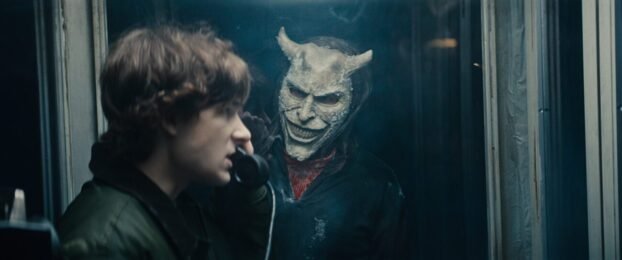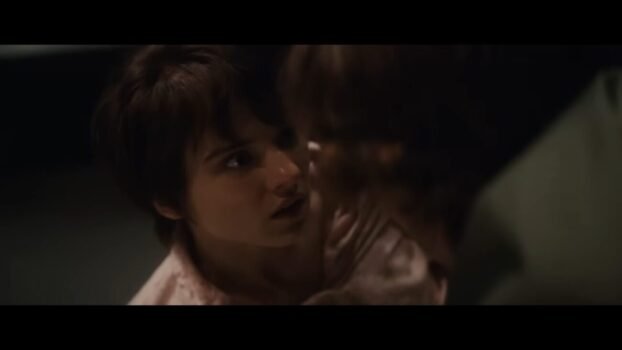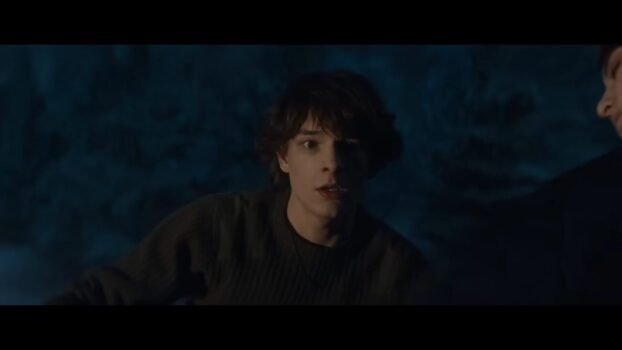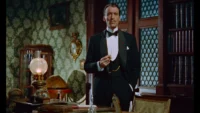There seems to be an overall critical appreciation for Black Phone 2, the sequel to the horror/thriller film The Black Phone. The first movie featured excellent performances all around, especially from actors Ethan Hawke and Mason Thames. It also starred Madeleine McGraw as Gwen Blake, the sister to Thames’ character, Finney. Hawke starred as “The Grabber,” a murdering villain who kidnapped Finney. Eventually, Finney escaped captivity, killed the Grabber, and reunited with his sister.
As said, the sequel is receiving mostly positive reviews, but I heard opinions on it were split. Still, I was excited to see what new ideas they brought to the table, especially when they were paying homage to classics like A Nightmare on Elm Street. While I enjoyed the first half of the film, the latter portion lacked creativity and focus. Fortunately, the relationship between Finney and Gwen remained intact, and the film featured some accurate religious commentary. This increased my enjoyment of the movie and brought what would have been an unenjoyable experience to one that was at least satisfactory.
Sibling Bonding
An aspect I appreciated about The Black Phone was its focus on the relationship between the brother/sister characters, Finney and Gwen Blake. There was a lot of heart and substance there, despite the characters not sharing much screentime. You could tell both Gwen and Finney cared for each other deeply, and ultimately, it was Gwen’s detective work (through her precognitive abilities) that led to the discovery of The Grabber’s victims.
That bond is brought over into the sequel, with Gwen still being protective of her brother. It’s been four years now since Finney escaped from that basement, and he’s developed anger and fear issues from the resulting trauma. In fact, the scene in which his character is reintroduced involves him participating in a fistfight, much the same way his friend Robin did in the former film. Gwen is aware her brother is experiencing issues, and attempts to warn him of his new habits, but she isn’t making much headway.

What’s even more troubling is that Gwen is having issues of her own. A phone call from her mother as a younger child (from a booth in 1957, no less) and a reoccurring nightmare of a young boy trapped under a lake of ice scrawling letters in the frost has been haunting her. She even has a few nighttime excursions sleepwalking and seeing flashbacks of the past. When she discovers that her mother made the phone call from Alpine Lake Christian Camp, she and her brother enroll themselves as camp counselors. But they don’t expect the snowstorm. And they definitely don’t expect his return.
Now Finney has to protect Gwen.
Dream Warriors
Many have already compared Gwen’s dream-walking abilities to Nancy’s from A Nightmare on Elm Street. And likewise, The Grabber’s main means of attacking Gwen and her friends is from the dream world. However, at times, our hero’s nemesis can cross the dream boundary and make attacks on others from the other side. While this is a cool homage to Elm Street, the blunt truth is that it lacks originality. Nothing new is done with it. If you die in the dream world, you die in the real world. We’ve all heard that before. Unfortunately, the latter half of the movie also follows suit in the excitement department. There were never much suspense or thrills, and it all just felt kind of rote. Gwen gets superpowers, but she barely uses them to fightback, for instance.

No, the beginning of the film is where most of its strengths lies. Establishing the characters once again, seeing how the trauma from the first film left its impact on them, all of these ideas pulled me in. What’s of also particular note is how Finney and Gwen’s father, Terrence (Jeremy Davies) has changed. He’s still an alcoholic, but he’s kicked the drinking habit. There’s also no indication that he beats his children anymore. He’s fully dedicated to his family. It’s nice to see a redemption story for him. Davies does the role justice.
One thing I immediately noticed from the outset of the film, were the characters’ costumes. All of them featured various shades of blue, as did the set itself. It makes sense as the film takes place around the cold and frigid wintertime.
Christian Respect
Another one of the film’s strengths is its ability to portray the difference between judgmental, hateful church goers and other types of Christians. Gwen herself is someone who believes in Jesus and constantly talks to him out loud in her prayers. When she encounters a couple of hateful believers in the camp, they are contrasted with more compassionate ones. I grew up Christian, and although I now consider myself more of a Christian Agnostic, it was still nice to see a portrayal of believers and my former faith in a positive light. The leader of the Christians in Camp Alpine, Mando (Demián Bichir) has a fantastic scene with Finney, where, through empathy, he gets to the core of what troubles our young hero.

Unfortunately, the other scenes do not feature strong writing. Many of them feature an abundance of long exposition where characters learn information we already know as the audience. These scenes are clunky in their execution as well as their writing and contributed to the overall feeling of the movie running too long.
Hell is Ice
The greatest let down, though, is that the movie simply isn’t scary. The opening sets the tone and instills fear and dread, but the thrills and chills wear off in the conclusion. Like ice, the film burns cold, but not in the way you would want it to. What starts out as a captivating character horror piece devolves into a by the numbers horror flick with just glimpses of a few intriguing ideas. These aren’t enough to keep the film afloat.




